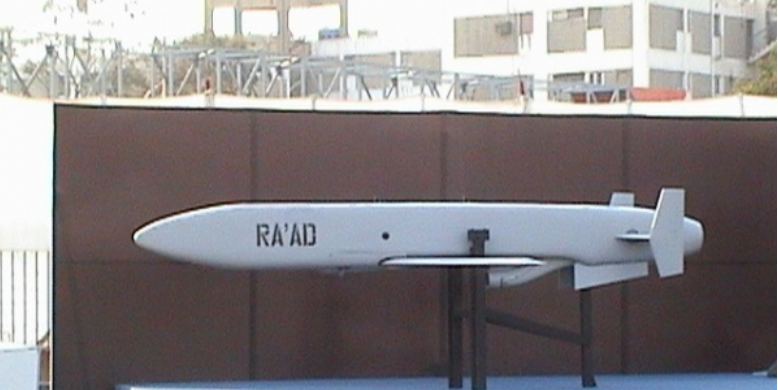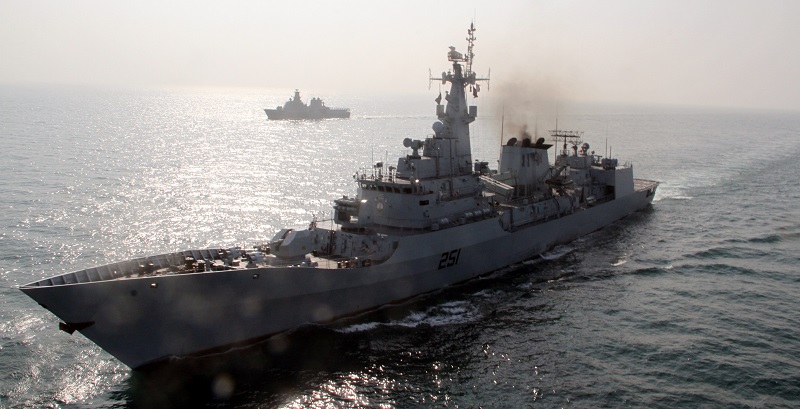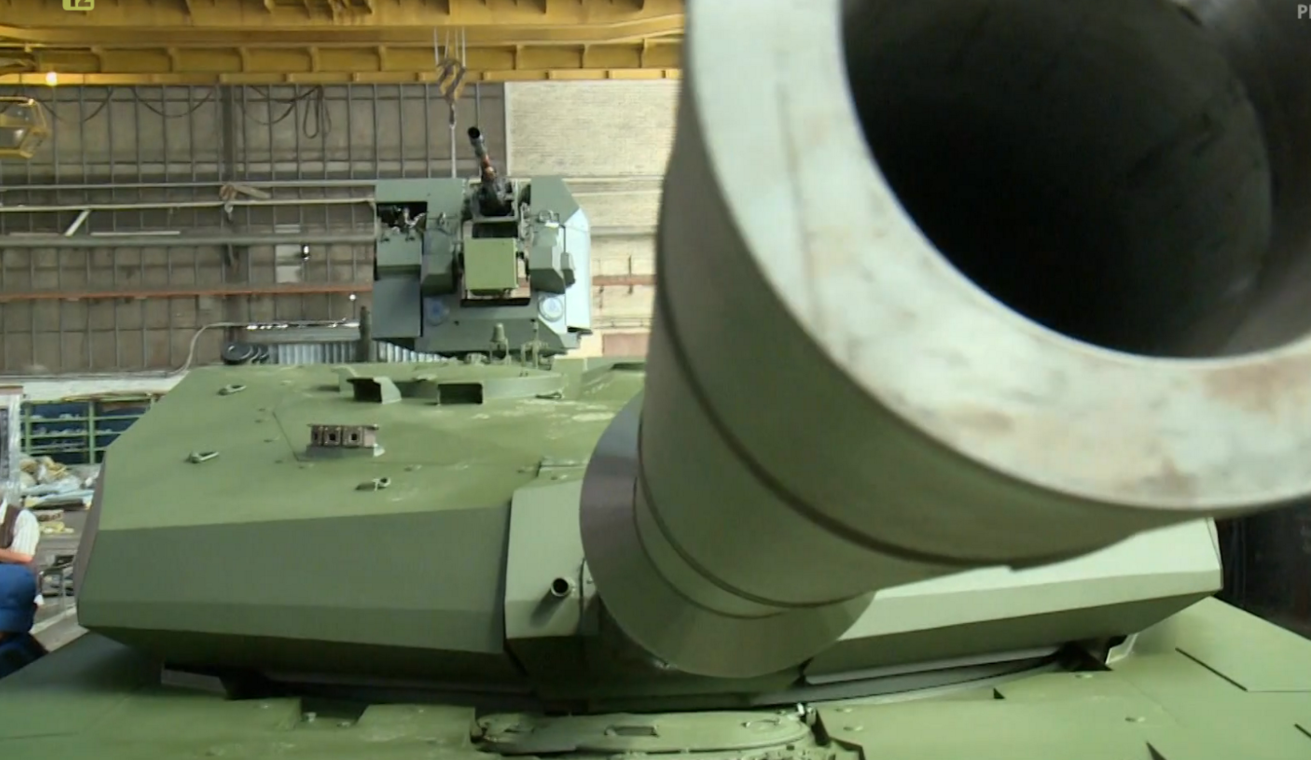2736Views 6Comments

India, the MTCR and its impact on Pakistan (Part-2)
In part-one, it was discussed how India’s entry into the Missile Technology Control Regime (MTCR) will benefit its numerous procurement and munitions development programs. The MTCR is a body that limits the export of technology that enables munitions (e.g. cruise missiles) and drones to push 500kg beyond 300km. By abiding to the MTCR’s tight export controls, India now has the avenue of fielding long-range cruise missiles and drones with the technology support of other MTCR members, such as the U.S.
From Pakistan’s perspective, the consequences of India joining the MTCR are significant, but they do not necessarily constitute a departure from what Pakistan currently requires in order to fulfill its tactical and strategic requirements. For example, India coming one step closer (albeit by overcoming a huge regulatory hurdle) to acquire the General Atomics Reaper or Avenger does not change Pakistan’s need for very capable anti-air warfare (AAW) systems in the form of effective surveillance systems (e.g. radars), surface-to-air missiles (SAM), and multi-role fighters.
While a potentially tenuous argument, Pakistan’s direct territorial proximity to India and closeness to its neighbour’s critical military and economic assets helps. For example, in strategic terms, Pakistan already possesses the ballistic missiles necessary to envelop India (e.g. the Shaheen III, which has a stated maximum range of 2750km). In the tactical realm, even MTCR-compliant air-to-surface munitions – such as stand-off range glide-bombs – can cover a reasonable chunk of India’s northwest operating theatre (penetrating from 60km to 350km).
Granted, the benefits of stand-off range engagement apply as much to India (if not more if the MTCR is included) as they do for Pakistan. With long-range cruise missiles, India has the option to engage Pakistan from the eastern edges of its Western Front, if not further (in the long-term). India basically benefits from an added layer (in terms of range and its ability to instigate an attack).
The solution for Pakistan would be to extend the range of its own stand-off weapons such that it too can readily operate from the western edges of its Eastern Front. In order to procure cruise missiles with ranges of over 1000km, the MTCR would – theoretically – help immensely (the Babur cruise missile has a range of 700km). In this ideal scenario, Pakistan could acquire micro turbojet and turbofans that will enable it to power land attack cruise missiles with not only sufficient range, but heftier payloads. This is key for high-explosive conventional warheads (for reinforced targets and infrastructure) and guided sub-munitions dispensers (which one could use to attack air fields or naval installations). In fact, guided sub-munitions – especially onboard an extended range Ra’ad ALCM – would amount to a significant coup for Pakistan. Not only could it utilize such a system to induce pressure onto India’s northwest theatre, but it could even use them in a tactical environment as a means to help curb an enemy land offensive involving heavy armour. Credible capabilities on this end could serve as a measure of conventional deterrence.
But this is theory. Pakistan itself seems to understand that joining the MTCR is prone to risk, especially in the form of the U.S. using the MTCR as a means to shape Pakistan’s strategic programs. Moreover, there is nothing to stop Pakistan from incurring the same vendor refusals it sees today, i.e. India using larger contracts and offers as a means to dissuade European suppliers from selling to Pakistan. In this case, the added benefits of joining the MTCR will be marginal, Pakistan will need to continue working on elevating its domestic research and development capacities, especially in sensitive and complex areas such as cruise missile propulsion (i.e. micro turbojets/turbofans).
The need to develop the capacity to generate such solutions was always present, but India’s entry into the MTCR does add urgency. Pakistan is not a paragon of technological development, but in the area of stand-off weapon development, it would be very wise to channel its limited resources to master the field. Yes, partnerships with China will be critical, but given that China itself is trying to commit towards MTCR export guidelines (which interestingly could be addressed if both China and Pakistan were cleared to join the MTCR), our analysis cannot include Chinese help for supra-MTCR technology. This will have to be done at home, and while it will be an arduous, lengthy, and costly process, the benefit of having in-house access to this sensitive (and scalable) technology cannot be overstated.
Speaking of China, it does seem that Beijing it is at a crossroads. For example, its CH-5 unmanned aerial vehicle (UAV) is a prelude to the advent of true Reaper-like UAVs, i.e. supra-MTCR technology. Countries not abiding by the MTCR – and thus not privy to its benefits – would be very interested in such a system, yet China exporting it would amount to a withdrawal of its commitment to the MTCR’s export guidelines. Such an act could irreparably harm its pending application, but Beijing’s entry would run against the core interests of the U.S. and its regional allies, namely Japan, South Korea and India. An exception for Pakistan could offer China an avenue to relieve the pressure being inducted by India, especially if the incentives to abide by the MTCR are declining. This is speculation territory, but it could be a variable to watch for in the short and medium term, especially as the MTCR’s benefits begin to manifest in India’s programs.



6 Comments
by Khalid Riaz
It is true that Pakistan is constrained in several ways in accessing weapon technologies. These constraints arise from direct supplier country’s sanctions (e.g. US), non-membership of multilateral agreements/groupings (MTCR, NPT etc), and India’s leverage with suppliers because of its ability to place large weapon system orders.
Theoretically, this requires Pakistan to develop these technologies domestically. Pakistan’s nuclear program, its missile delivery systems, and more recently, JF-17 light combat aircraft are all examples of massive and very successful efforts undertaken in this direction.
Nevertheless, we cannot indigenise every weapon system we need but cannot buy from other countries. Our economic base does not allow us that luxury. In fact very few countries have done this completely. And there are examples of huge countries like USSR that went broke pursuing this policy relentlessly.
I just want to state that in the national security equation, apart from the weapon systems, the NEED for them is also a variable! Allow me to explain.
India reacts to arms buildup of both China and Pakistan despite there being no formal pact between the latter two countries to come to each other’s aid in case of war. Being a smaller economy compared to these big neighbors engaged the new strategic great game, it is not to Pakistan’s advantage to be caught in the arms race dynamic driven primarily by the other two contestants.
We need more weapons than we can afford because we are refusing to find our way out of this trilateral arms race. We need to take up negotiation with India — admittedly a very difficult task, especially with Modi government — and try to agree on a way forward for addressing our outstanding issues without sacrificing our core interests.
Our aim should be to establish our own standing on India-pakistan issues independently of China. This is important because India’s posture towards Pakistan is aimed at maintaining the status quo. On our main dispute, Kashmir, India is a status quo power, regardless of the rhetoric. It is we who want to change that status quo. Our stance is principled, and should not be given up. We are the challenger nevertheless.
On the other hand, India aided by the US wants to play the role of a challenger vis-a-vis China. If the current trends prevail for a few more years, China would perhaps overshadow US as an economic and military power. It has already inched ahead of US, in Purchasing Power Parity (PPP) terms, as the world’s largest economy. This lead could become very significant in decades ahead. Pakistan’s strategy should be based on letting US, China and India worry about the New Great Game without us getting embroiled in it like we did in the SEATO and CENTO era.
Getting from here to there promises to be the most difficult of undertakings. It remains very much possible though, and its benefits in terms of enhanced security and prosperity of Pakistan are enormous. The foreign policy establishment in Pakistan has identified several avenues. One example is the no war pact with India. This is not a conspiracy rather it is our very own proposal to India. This does not mean sacrificing our core interests, nor does it undermine Pakistan’s principled stand on Kashmir.
Other viable options to pursue the above objectives could include granting the MFN status to India. It may be noted in this regard that India has already given us MFN status. Reciprocation would in no way compromise our stand on Kashmir. If Indian willingness to negotiate shows credible signs of improvement as a result of these concessions, we could consider granting it overland access to trade with central Asia. These are huge incentives for India that could be used to induce a change in its posture vis-a-vis Pakistan.
I can offer more suggestions, I don’t feel that would be necessary. So let me conclude by reiterating my main thesis: in our efforts to meet our legitimate defence needs, let us remember that NEEDS themselves represent a variable. What proportion of our meagre national resources do these needs claim depends on our foreign policy posture.
by Sami Shahid
range of Pakistani RAAD missile is more than Indian MTCR
by Technical Difficulties
Biggest joke lol
by Sami Shahid
you don’t need to defend your cruise missile developed by Israel
by freedom-from-religion
>> On the other hand, India aided by the US wants to play the role of a challenger vis-a-vis China. If the current trends prevail for a few more years, China would perhaps overshadow US as an economic and military power.
China is following the tried, tested and repeatedly failed East Asian economic model. In the very near future, China’s debt fueled and export-driven economic prowess will grind to a halt, and the country will soon join the ranks of Japan, South Korea etc with negligible growth for decades. Currently, it takes $6 of debt for every $1 worth of growth in China. Unsustainable would be putting it lightly. Add to that, China’s extremely weak economic institutions. Even now, China is afraid to float its currency freely.
Chinese corporations are in even worse state. According to a report by Transparency International, 9 Indian companies have made it to the list of the top 10 most transparent companies from among emerging market firms. Of the 37 Chinese companies evaluated, 25 made it to the bottom list. ZTE is the only Chinese firm in top 25, while 12 Indian companies made it to the top 25. Speaks volumes about Chinese corruption. With growth now stagnating, China is awaiting a perfect storm, probably pushing the world economy into a tailspin.
Now comes China’s military “might”. China is at least 50 years behind west’s military prowess. I’m not even exaggerating. Some examples:
“The PLA possesses 7,580 main battle tanks – more than the U.S. Army. But only 450 of those tanks – the Type 98As and Type 99s – are anywhere near modern, with 125-millimeter guns, composite armor, modern suspension and advanced fire control systems. The other 7,130 Chinese tanks are the same descendants of Soviet T-55s that comprised Beijing’s armored force in the late 1980s which were obsolete even then.”
“Of 1,321 fighters China possess, only 502 are modern – 296 variants of the Russian Su-27 and 206 J-10s of an indigenous design. The remaining 819 fighters – mostly J-7s, J-8s and Q-5s – are 1960s designs built in the 1970s. They wouldn’t last long in a shooting war.”
“Of the three, Chinese navy is in the best shape, but that’s not saying much. The PLAN’s destroyers and frigates are fairly new, but its first aircraft carrier Liaoning is a rebuilt Soviet ship from the 1980s. After a nine-year refit, Liaoning started sea trials in 2011.” Even India has 2 Aircraft carriers, with a 3rd one (indigenously built) undergoing sea trials. USA is in a different orbit when it comes to Naval technology.
by Zahid Ullah
MTCR is not missile 😀 MTCR stands for Missile Technology Control Regime , its about tech export